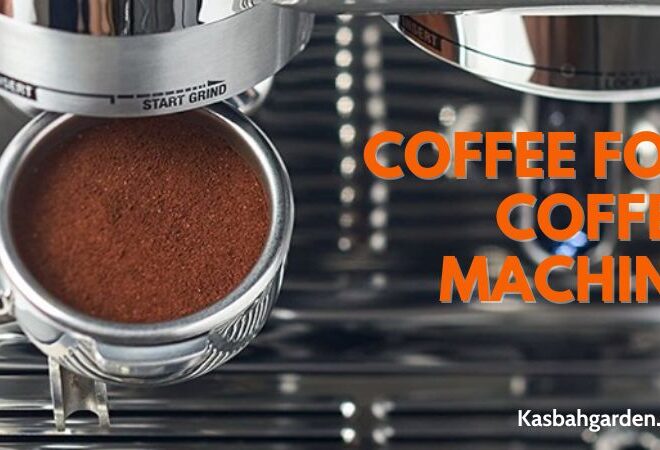What Makes Blonde Roast Coffee Special? Find Out Now!
In the world of coffee, the roast can dramatically transform the bean’s inherent character, influencing everything from aroma to acidity. Among these diverse roasting profiles, Blonde Roast stands out as a unique and intriguing option that both novices and connoisseurs of coffee culture have come to appreciate. This lighter roast, often characterized by its light brown hue and pronounced acidity, preserves the original flavors of the coffee bean, offering a cup that is both vibrant and complex. As we dive into the nuances of coffee brewing, understanding the impact of the roast on your cup becomes paramount. This article, titled “How Many Tbsp Coffee Per Cup,” not only seeks to enhance your brewing skills but also deepens your appreciation for how different roasts, particularly the Blonde Roast, influence the final taste of your coffee. By exploring the ideal coffee-to-water ratios, we invite you on a journey to perfect your daily brew, ensuring every cup is a testament to your growing expertise. Let’s embark on this flavorful exploration together, unraveling the secrets behind crafting the perfect cup of coffee, starting with the significance of choosing the right roast. Whether you’re a seasoned barista or simply a coffee enthusiast looking to refine your morning ritual, this article promises to pique your curiosity and encourage a deeper appreciation for the art and science of coffee brewing.
Overview of the Rise of Blonde Roast Coffee
Blonde roast coffee has become an increasingly popular option among coffee drinkers around the world. This light roast stands out for its smooth, subtle flavor profile compared to darker roasts.
While dark roasts have dominated coffee culture for decades, many coffee lovers are now embracing the mellow taste and aroma of blonde roast. Roasters and cafes have responded to this demand by expanding blonde roast offerings.
Let’s take a quick look at the history and global context for the blonde roast trend before diving into what makes this bean so unique.
A Brief History and Global Perspectives
Although blonde roast gained widespread popularity in the 2000s, lighter roasts have been around for centuries. As early as the 1600s, coffee experts in Yemen pioneered light roasting techniques that resulted in bright, tea-like cups.
In the 19th and 20th centuries, innovations in roasting technology enabled the mass production of dark roasts favored by American and European consumers. However, some specialty roasters continued to experiment with lighter roasts.
The modern blonde roast emerged out of third wave coffee culture in the 1990s and 2000s. Pioneering roasters focused on highlighting the nuances of single-origin beans through careful light roasting.
While darker roasts still dominate in coffee-drinking powerhouses like Brazil and Italy, blonde roast has taken off in Australia and the Nordic countries. Customers across North America and Asia are also jumping on the blonde roast bandwagon.
Understanding Blonde Roast Coffee

Now that we’ve covered some background, let’s dig into what defines blonde roast and how it differs from other roasts.
What is Blonde Roast Coffee?
Blonde roast coffee is a type of coffee made from lightly roasted beans, showcasing the coffee’s natural sweetness and offering a smooth, subtly sweet flavor with citrusy notes. It is considered the lightest roast, lighter than medium and dark roasts, and is crafted for those who prefer a milder taste in their espresso. Blonde roast coffee is known for its delicate flavors, often described as lemony or citrusy, with a hint of sweetness and a lighter body compared to other roasts. Despite being light in color, blonde roast coffee can have a significant caffeine content similar to other roasts. It is recommended to brew blonde roast coffee carefully to fully extract its unique flavor profile.
The Origin of the Term “Blonde Roast”
The term blonde roast emerged in the early 2000s through Starbucks and other third wave coffee companies.
Prior to this, lighter roasts were simply called light or cinnamon roasts. The new name helped brand and market this roast style as a smoother, mellower alternative to other options.
The word “blonde” evokes associations with lightness and brightness. Using this distinctive term helped light roasts stand out from darker roasts that had traditionally dominated the specialty coffee scene.
The Science Behind Blonde Roast Coffee
To truly appreciate the singular flavor of blonde roast, it helps to understand what happens during the roasting process at a chemical level.
Chemical Transformations During Roasting
When coffee beans are roasted, the heat causes chemical reactions that transform the structure and composition of the beans:
- Starch is converted to caramelized sugars that bring out sweetness.
- Chlorogenic acids break down, reducing acidity and bitterness.
- Aroma compounds are developed, creating pleasing smells.
Lighter roasts limit these chemical changes to preserve the beans’ inherent qualities. Blonde roast in particular stops the roasting when sugars just start caramelizing and acids remain intact.
The Impact of Time and Temperature
The time and temperature used during roasting have a huge impact on the chemical transformations outlined above.
Blonde roasts are:
- Roasted for a shorter time at lower temperatures around 180-185°C.
- Heated just until the beans start to lighten in color and sugars barely begin to caramelize.
- Stopped before the full range of aroma compounds can develop.
This preserves the bean’s natural acidity, fruitiness, and clarity of flavor.
In contrast, darker roasts are heated to over 200°C for longer to fully caramelize sugars and transform the acids and aromas.
Deep Dive Into Blonde Roast’s Flavor and Aroma
Now let’s explore the taste, aroma, and mouthfeel that set blonde roast apart.
The Unique Flavor Profile
The flavor profile of blonde roast coffee is characterized by:
- Brightness and acidity – High acidity is preserved from the bean. This gives a tart, vibrant quality.
- Fruitiness – Floral and berry notes are prominent, especially in light roasted African beans.
- Sweetness – Some sugars start to caramelize, while the bean’s inherent sweetness remains intact.
- Mild aroma – Smells are subtle and complex without stronger roasted aromas.
- Tea-like quality – Crisp and delicate with clear origin flavors, akin to some teas.
- Low bitterness – Chlorogenic acids break down less, reducing bitterness.
Comparative Taste Test: Blonde vs. Light Roast
While blonde and light roast may seem similar, side-by-side tasting reveals distinct differences:
| Characteristic | Blonde Roast | Light Roast |
| Color | Pale tan | Tan/golden brown |
| Acidity | High acidity | Moderate acidity |
| Flavor Clarity | Very clean | Slightly muddled |
| Sweetness | Low sweetness | Increased sweetness |
| Bitterness | Non-existent | Slight bitterness |
| Aroma | Faint, complex | Nutty, roasty |
As this table illustrates, blonde roast preserves acidity and clarity of flavors while light roast develops more sweetness and roasted character.
Food Pairings that Complement Blonde Roast
Blonde roast’s flavor profile pairs well with foods that highlight or contrast its vibrancy. Great matches include:
- Fruit – Fresh berries, grapefruit, stone fruits
- Cheese – Goat cheese, feta, Swiss
- Seafood – Sashimi, seared scallops, grilled shrimp
- Pastries – Scones, pound cake, biscotti
The possibilities are endless – feel free to get creative with food pairings!
Brewing the Perfect Cup of Blonde Roast
Now that we’ve explored the singular flavor of blonde roast coffee, let’s go over some key tips for coaxing the best results out of these beans.
Optimal Brewing Methods for Blonde Roast
The best methods for blonde roast are:
- Pour over – Allows delicate flavors to shine. Gooseneck kettles provide control over water temperature and flow rate.
- Automatic drip – Quick and convenient way to make smooth, balanced blonde roast. Use flat-bottom filters.
- Cold brew – Mellows acidity while retaining subtle flavor notes. Brew concentrated for 12-24 hours.
- Aeropress – Compact immersion method that brings out sweetness and fruitiness.
Avoid espresso methods, which tend to overextract blonde roast.
Brewing Parameters
Dialing in the proper parameters is key to optimizing extraction:
- Water temperature – 187-193°F (86-90°C). Too hot dulls acidity.
- Coffee-to-water ratio – 1:15 to 1:17. Use more water to prevent overextraction.
- Grind size – Medium-fine. Coarser than espresso, finer than drip.
- Brew time – 2-3 minutes. Shorter time prevents bitter overextraction.
Adjust to your taste preferences while keeping these guidelines in mind. Recording your parameters helps refine technique.
The Potential Health Benefits of Blonde Roast

In addition to its pleasant flavor, blonde roast offers some promising health and wellness advantages.
Blonde Roast Contains More Chlorogenic Acids
Chlorogenic acids are antioxidants that may:
- Reduce inflammation
- Lower blood pressure
- Stabilize blood sugar levels
Since these compounds break down more slowly in blonde roast, it retains higher levels compared to darker roasts.
Less Hydroxyhydroquinone (HHQ)
HHQ is a compound produced during roasting that may raise cholesterol levels. Blonde roast contains less HHQ because of shorter roasting.
Higher Polyphenol Levels
Polyphenols are antioxidant plant compounds linked to anti-aging effects, positive gut health, and disease prevention. Lighter roasts retain more polyphenols.
While more research is needed, the limited roasting of blonde roast may help preserve some of coffee’s beneficial bioactive compounds.
Beyond the Bean: Environmental and Ethical Considerations
In addition to great taste and potential health benefits, choosing blonde roast aligns with sustainability and promotes ethical practices across the coffee industry.
Blonde Roast and Sustainability
The shorter roasting time of blonde roast means less energy consumption compared to darker roasts. This reduces the carbon footprint of blonde roast coffee.
Sourcing high quality beans and roasting them lightly encourages sustainable growing practices by rewarding farmers for harvesting techniques that yield better green coffee.
Supporting Fair Trade and Direct Trade
Many roasters sourcing exceptional beans for blonde roast focus on fair trade and direct trade relationships that benefit coffee farmers.
Fair trade certification supports fair labor practices and direct trading relationships cut out middlemen to get more profits to the growers.
Drinking blonde roast is a tasty way to promote sustainable, ethical coffee production!
The Evolving Culture Around Blonde Roast Coffee
While blonde roast has its dedicated fans, it also attracts plenty of debate and discussion within coffee culture.
Diverse Community Perspectives
Blonde roast provokes a range of reactions:
- Purists argue that blonde roast showcases the bean’s pure flavors.
- Critics contend it is underdeveloped with weak body.
- Specialty roasters promote it as a new innovation.
- Traditionalists say dark roasts have richer depth.
This diversity of perspectives leads to lively discourse and engagement within the coffee community.
Trends and Innovations
As blonde roast continues gaining popularity, roasters keep pushing boundaries:
- Experimenting with new beans, from Geshas to hybrids.
- Tweaking roast profiles to refine acidity and sweetness.
- Creating signature blonde espresso blends.
- Incorporating novel brewing methods like cold drip.
Blonde roast encourages continual creativity and innovation within the specialty coffee scene.
FAQs: Everything You Wanted to Know About Blonde Roast
Blonde roast often raises many questions for people trying it for the first time. Here are answers to some frequently asked questions:
Is blonde roast lighter than light roast?
Yes, blonde roast undergoes the shortest roasting time and lowest temperatures to preserve the bean’s inherent qualities. Light roast is roasted slightly longer and darker.
Does blonde roast have more caffeine?
No, caffeine content depends on the coffee species, not roast level. However, the brighter taste of blonde roast may give more of an energizing feel.
Is blonde roast acidic?
Blonde roast has higher acidity since its acids break down less during roasting. But this tart, fruity acidity adds vibrancy rather than harshness.
Why does blonde roast look pale?
The beans are roasted for a very short time, so they don’t have time to darken much before the roasting is stopped. This preserves the bean’s original qualities.
Is blonde roast weaker in flavor?
While some may perceive it as weaker due to less roasty flavors, blonde roast has very complex, delicate flavors. Brewing it properly helps bring out its taste.
Brewing Blonde Roast Coffee at Home
Want to experience the pleasures of blonde roast at home? Follow these tips for incredible cups:
A Step-by-Step Guide to Brewing
Follow this straightforward method for foolproof blonde roast coffee:
- Grind beans to medium-fine consistency.
- Heat filtered water to 195°F/90°C.
- Rinse filter and preheat gear.
- Weigh out 15g coffee grounds per 8 oz. cup.
- Blooming phase: Wet grounds and let rest 30 seconds.
- Pour water in spirals, aiming for total brew time of 2:30-3:00 minutes.
- Enjoy immediately!
The Art of Grinding and Brewing
With blonde roast, technique is key:
- Grind size – Precise grind enhances extraction and flavor clarity.
- Water quality – Filtered water prevents minerals from muddling the taste.
- Brew time – Extending contact time overextracts blonde roast.
- Clean gear – Rinse away traces of oil for pure flavor.
Getting these elements right unlocks blonde roast’s potential! Experiment to find your perfect routine.
Concluding Thoughts on Blonde Roast Coffee
I hope this guide has shed light on the complex world of blonde roast coffee! Here are some final takeaways:
- Blonde roast highlights a bean’s inherent qualities rather than roasty transformations.
- Understanding the chemistry behind this light roast helps appreciate its singular flavor.
- With careful sourcing and brewing, blonde roast offers a smooth, vibrant sensory experience.
- Choosing blonde roast supports sustainability, fair trade, and innovations within specialty coffee.
- Blonde roast inspires lively debate and creativity within modern coffee culture.
So embrace the pleasures, science and craft behind blonde roast! Trying new beans, roasts and brew methods keeps our passion for coffee burning bright.



Best ways to enjoy blonde roast coffee
I like to make a cold brew with the blonde roast, the nuttiness really comes through that way. So usually at home I’ll make myself something similar to a salted caramel sweet cream cold brew. A little (I mean like a pump for 16 oz) vanilla syrup, top with cold foam, caramel drizzle, and sea salt.
What is blonde roast in caffeine? Is it stronger than espresso?
Blonde roast is a lightly roasted coffee bean. It has a less robust flavor and more caffeine.
Is blonde roast iced coffee you can buy at the grocery store similar?
Maybe not the same, but I think the iced coffee with a little oat milk and some syrup could still be a really nice drink to enjoy at home for you! You can always experiment with the amounts of sweetness and it’ll save ya some money